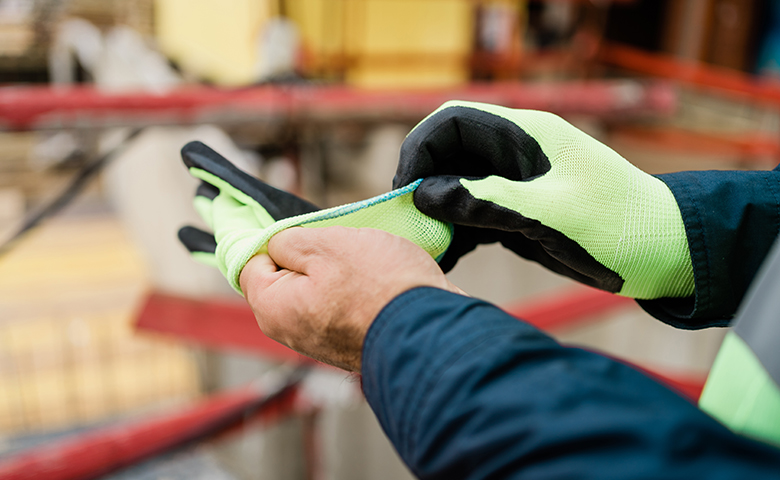You can think of habits as an additional layer of protection for safety gloves because they can help counteract the forgetfulness that can prevent employees from wearing PPE. Habits can also stop employees from being influenced by human factors to take safety shortcuts that might circumvent measures meant to protect their hands (not to mention the rest of their bodies).
When employees become distracted, their brain goes on autopilot and does whatever it’s used to. Are employees in the habit of wearing their gloves? If so, then they’ll likely put them on even when they’re distracted or complacent—which is great news, because that’s when they’ll need them most.
And if workers aren’t in the habit of wearing PPE then they’re in double trouble, as they won’t be able to rely on the protective measures of PPE even as their risk of an incident has increased thanks to human factors. There is also the additional consideration of workplace safety culture, which can help reinforce the benefits of habits or exacerbate the problems stemming from their absence, depending on the state of the culture.
The science of building habits is a constantly evolving field of study. Plenty of myths are out there—from habits only taking 21 days to form (sometimes that’s the case but often it takes longer) to habits becoming permanent once they’re established (the good news is that bad habits can be broken, the bad news is that good habits need regular reinforcement).
Fortunately, several well-established facts can give you a helping hand in building better habits when it comes to gloves and hand safety.
It takes time. According to Tim Page-Bottorff, CSP, the author of “The Habit of Safety: Forming, Changing and Reinforcing Key Safety Behaviors”, you need a dedicated approach to habit building. He says, “With the average person needing just under 10 weeks to develop a new habit—and a sizeable minority of employees requiring longer—no single graphic video or shocking story will have a consistent impact on their behavior for the length of time required to establish a new routine.” Instead of impact, target consistency because it takes time and repetition to build safety habits.
Group effort = group success. In the habit-building guide called How to Make Habits Stick, it’s evident that shared goals can contribute to a sense of accountability, build group momentum, and ultimately, lead to better habit adoption. Try establishing hand safety habits as a team rather than individually.
Positivity matters. Page-Bottorff also notes that establishing long-term habits requires a positive approach: “Negative communications, from injury-based scare tactics to old-school yelling, might correct behavior in the moment, but the effect will wear off well before a new habit is formed. Positive thinking has been demonstrated to increase people’s ability to build personal skills and supervisors who take an approach based on encouragement and support will likely promote better habit formation.” It’s worth noting that positivity is a widely applicable soft skill for safety professionals and learning to use it well can have a dramatic impact on many different safety outcomes, and not just on the rate of hand incidents.
This blog post is an adapted excerpt from the safety guide Show of Hands: Insights and Strategies to Prevent Hand Injuries, which examines robust research and survey data on the most effective ways to reduce hand injuries. Read the guide today for more research, insights and essential hand safety pointers for your workplace.

